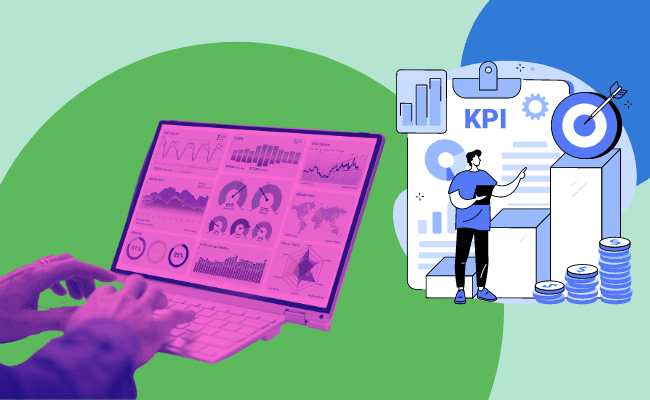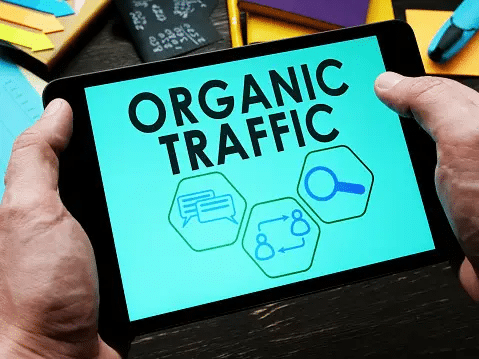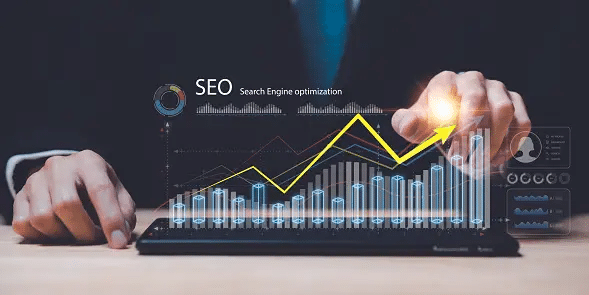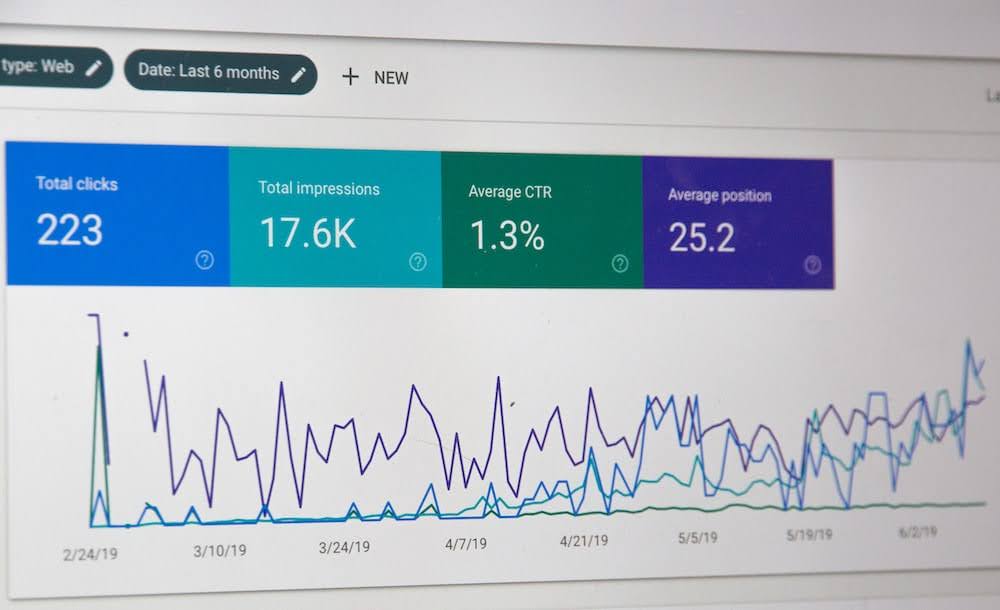Are you a business owner or e-commerce entrepreneur aiming to maximize the capabilities of your website? In today’s competitive digital landscape, tracking the right metrics can make all the difference. That’s where SEO KPIs or Key Performance Indicators come into play.
This blog will explore the five essential SEO KPIs every business owner should track: organic traffic, keyword and search rankings, backlinks, on-page engagement metrics, and conversion rates. Comprehending and tracking these key performance indicators (KPIs), you will gain valuable insights into the efficiency of your SEO and marketing endeavors. Moreover, this information will empower you with the necessary knowledge to make well-informed decisions.
Gear up to explore some of the most important SEO KPIs and discover how tracking these metrics can propel your business to new heights. Whether you’re an e-commerce entrepreneur, a small business owner, or a marketing professional, this article will provide actionable strategies and insights to help you harness the power of SEO and achieve sustainable growth.
Stay tuned for the upcoming sections, where we’ll dig deeper into each SEO KPI and uncover strategies to leverage their full potential. Let’s jump in and explore the essential SEO KPIs every business owner should track.
You May Also Like: SEO Trends 2024
Understanding SEO KPIs to Track
SEO Key Performance Indicators (KPIs) are measurable metrics that provide insights into your website’s SEO performance that provide insights into your website’s SEO performance. If you’re just getting started, here’s a comprehensive look at what search engine optimization involves and how it aligns with business goals. They help you gauge the effectiveness of your strategies and make data-driven decisions to improve your online visibility. That’s how important SEO KPIs are.
Measuring SEO KPIs, and other SEO metrics, is crucial for measuring your website’s performance and impact on your business. It allows you to optimize your website’s performance, drive more traffic, and increase conversions.
The main types of SEO KPIs include organic traffic, keyword rankings, and backlinks.
- Organic traffic signifies the visitor count who finds your website through search engine results without paid advertising.
- Keyword rankings indicate how well your website is in search engine ranking for specific search terms.
- Backlinks are connections from external websites directed toward your site, serving as indicators of authority and trustworthiness.
These examples demonstrate a small portion of the SEO KPIs that business owners should monitor. Other metrics include on-page engagement metrics (such as bounce rate and time on page) and conversion rates (the percentage of website visitors who take a desired action on a particular page, such as purchasing or filling out a form).
SEO KPI (Key Performance IndicatorS) #1 – Organic Traffic
Organic traffic, which refers to the unpaid and natural visitors attracted to your website via search engine results, serves as a significant Key Performance Indicator (KPI) for business owners in terms of SEO. Tracking organic search for traffic provides valuable insights into your website’s search engine visibility and the effectiveness of your SEO efforts.
Further, to track your organic and search engine traffic, utilize tools like Google Analytics or Google Search Console, which offers comprehensive data on your website’s traffic sources. This allows you to monitor organic search volume, identify trends, and analyze user behavior.
Increasing organic traffic from search queries requires strategic SEO tactics. Conduct thorough keyword research to identify the relevant keywords, terms, and phrases your target audience searches for.
Comparatively, incorporate these keywords strategically into your website’s content, including headlines, meta tags, and body copy to improve your search engine rankings and drive more organic traffic.
Optimizing your website’s structure, improving page load speed, and ensuring mobile-friendliness are additional SEO tactics that can boost organic traffic, especially when combined with strategies outlined in this guide to mastering technical SEO.
For a deeper dive into improving backend performance, explore how to master technical SEO.
A user-friendly and well-optimized website enhances the user experience and increases your chances of ranking higher in search engine results—something especially crucial for e-commerce sites looking to scale, such as those guided by a Shopify SEO expert.
Content optimization plays a vital role in driving organic traffic. Basically, regular publishing of high-quality, informative, engaging content that aligns with your target audience’s interests and needs helps in the long run.
Achieving this can be accomplished through a variety of content formats, including blog posts, articles, videos, infographics, and other engaging media.
You May Also Like: 7 Proven Strategies to Increase Organic Traffic to Your Website
SEO KPI #2 – Keyword Rankings
Keyword rankings are a significant SEO Key Performance Indicator (KPI) influencing website visibility and organic traffic in Google search alone. By monitoring the rankings of specific keywords, you can evaluate the performance of your website in search engine results. With this, you can make informed choices to enhance your search rankings even more.
Keyword rankings pertain to the positions of your website in search engine results for particular keywords or phrases. Overall, higher rankings increase your search visibility and attract more organic traffic.
To monitor keyword rankings, utilize SEO tools like Google Search Console, SEMrush, or Moz, which provide comprehensive data on organic search results, snippets, and keyword positions.
Improving keyword rankings involves effective target keyword research and search engine optimization alone. Particularly, conduct thorough keyword research to identify relevant terms and phrases with high search volume and relatively low competition. Incorporate these keywords into your website’s content, including headlines, meta tags, and body copy.
Create dedicated landing pages or blog posts targeting specific keywords. Develop high-quality, informative, and engaging content that provides value to your target audience.
By incorporating appropriate keywords into your content, you can enhance the likelihood of higher rankings on search engine results pages, attracting organic traffic to multiple website pages.
Consistently monitor and analyze the rankings of your keywords to evaluate the impact and success of your search engine optimization endeavors. Adjust your keyword targeting strategies as needed, targeting new or refining existing ones.
Read More: Content Promotion Strategies: Amplifying Your Message
SEO KPI #3 – Backlinks
Backlinks are a critical SEO Key Performance Indicator (KPI) that significantly impacts website authority, branded traffic, and search engine rankings. Understanding the importance of backlinks and implementing strategies to build high-quality ones can improve your website’s visibility and organic traffic.
Backlinks refer to links from external websites that direct search engine queries toward your website. Basically, they serve as endorsements and signals of credibility and trustworthiness to search engines. Websites with higher-quality backlinks rank higher in the search engines’ results.
To obtain high-quality backlinks, focus on developing valuable and engaging content that naturally entices other websites to link to it. Otherwise, publish informative blog posts, research articles, or in-depth guides that offer unique insights and expertise in your industry. Engaging in guest blogging and reaching relevant websites can also help you secure backlinks.
Tools like Google Search Console, Ahrefs, or Moz provide features to track backlinks and analyze their performance. These tools allow you to monitor the quantity and quality of your backlinks. Additionally, it can identify any toxic or spammy links, and track the impact of your link-building efforts.
Building high-quality backlinks takes time and effort. Likewise, focus on acquiring links from authoritative and relevant websites in your industry. Seek opportunities for partnerships, collaborations, or guest blogging on reputable platforms.
By earning quality backlinks, you enhance your website’s authority. Additionally, it can increase your content marketing chances of ranking higher in search engine results.
Regularly monitoring and analyzing your backlinks is essential for identifying potential issues or discovering opportunities for improvement. Track the growth of your website’s backlink profile, analyze the referral traffic from backlinks, and adjust your link-building strategies accordingly.
You May Also Like: The Importance of Anchor Text in Backlinks
SEO KPI #4 – On-Page Engagement Metrics
On-page engagement metrics are crucial in measuring user experience and evaluating website performance. Generally, understanding the significance of on-page engagement and implementing strategies to improve these metrics can enhance user satisfaction and improve SEO outcomes.
On-page engagement metrics consist of different indicators, such as the bounce rate, duration of time spent on the page, and the count of pages accessed per session. The bounce rate is a metric that quantifies the proportion of visitors who exit your website after viewing just one page. On the other hand, the time on the page represents the average duration users spend on a particular page.
Optimizing on-page elements is crucial for better user engagement. Ensure your website loads quickly and is mobile-friendly—this is especially critical today. These mobile SEO best practices provide practical insights for optimizing mobile performance. Hence, slow-loading pages and poor mobile experiences can lead to high bounce rates.
Create clear and compelling headlines, engaging content, and visually appealing designs to captivate your audience—elements that benefit greatly from a strong visual identity tailored for social platforms.
Tips for On-Page Engagement Metrics
To improve on-page engagement metrics, consider implementing the following tips:
- Enhance page load speed by optimizing image sizes, leveraging browser caching, and minimizing code and script files.
- Employ captivating and descriptive meta titles and meta descriptions to engage users. Encourage them to click on your web pages when they appear in search engine results.
- Enhance user readability and navigation by creating well-structured content with easily identifiable headings, subheadings, and bullet points.
- Incorporate multimedia elements such as images, videos, or infographics to make your content visually appealing and engaging.
- Include relevant internal links to guide users to related content within your website, encouraging them to explore further.
Regularly monitor and analyze your on-page user engagement metrics using tools for this SEO Key Performance Indicators. This will help you identify pages with high bounce rates or low time on page and allow you to make data-driven optimizations to improve user engagement.
Read More: How to Improve On-Page SEO for Your Business Website
SEO KPI #5 – Conversion Rate
Tracking conversion rates as an SEO Key Performance Indicator (KPI) is crucial for measuring the effectiveness of website traffic and user engagement. Understanding the significance of conversion rates and implementing strategies to optimize them can lead to increased conversions and business success.
Conversion rate pertains to the proportion of individuals visiting a website who engage in a desired action, such as purchasing, completing a form, or subscribing to a newsletter. It must demonstrate how well your website converts visitors into customers or leads, indicating its effectiveness. This is particularly relevant when using social media for lead generation as part of your broader funnel strategy.
To track and analyze conversion rates, utilize analytics platforms that provide insights into user behavior and conversion actions. Later, establish conversion tracking goals to monitor particular activities on your website and evaluate the conversion rate associated with each objective. By utilizing this approach, you can pinpoint areas that require enhancement and make informed decisions based on data analysis.
Meanwhile, this SEO KPI can be achieved by optimizing conversion rates requires focusing on Call-to-Action (CTA) optimization and enhancing the user experience. Ensure your CTAs are clear, prominent, and compelling, guiding visitors toward the desired conversion action.
Tips for Conversion Rate
Use persuasive language, contrasting colors, and strategically placed CTAs to increase click-through rates and conversions. Improving the user experience is also essential for optimizing conversion rates. Streamline your website’s navigation, making it easy for visitors to find what they want.
Optimize your landing pages for relevance and provide valuable and relevant content that aligns with users’ expectations. Instead,make the conversion process simple and intuitive, minimizing form fields and reducing friction points. A well-structured smart budgeting approach ensures that your SEO and marketing spend delivers measurable ROI.
Regularly analyze your conversion rates, identify areas with low conversion rates, and conduct A/B testing. Ongoing SEO maintenance is essential to ensure long-term performance and keep your strategies aligned with algorithm changes.
You May Also Like: 3-Step Content Audit for eCommerce Conversion Rates
Conclusion
Tracking the five essential SEO Key Performance Indicators (KPIs) discussed in this article is vital for business owners seeking to optimize their online presence and drive success. Strategic brand positioning also plays a role in aligning your SEO and content with long-term business goals.For instance, monitoring organic traffic, keyword rankings, backlinks, on-page engagement metrics, and conversion rates provide valuable insights into website performance and user behavior.
Frequently Asked Questions
What are SEO KPIs and why are they important for my business?
SEO KPIs (Search Engine Optimization Key Performance Indicators) measure the effectiveness of your website’s SEO strategy, helping you understand how well your site ranks in search engine results, attracts traffic, and converts visitors into customers. Lastly, tracking these KPIs is crucial for optimizing your website’s performance and improving your online visibility and revenue.
Which SEO KPI should I prioritize for my website’s organic growth?
While priorities can vary based on your specific business goals and industry, organic traffic is often considered a top KPI to track. It indicates the health of your SEO efforts by showing the number of visitors coming to your site through search engines, reflecting your website’s visibility and relevance.



















